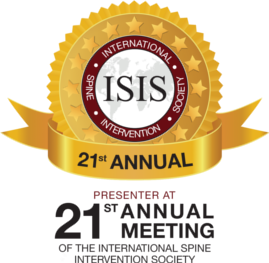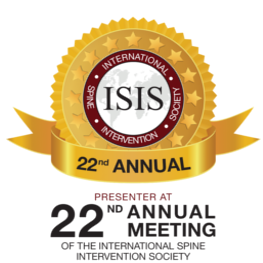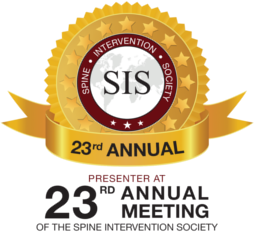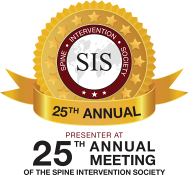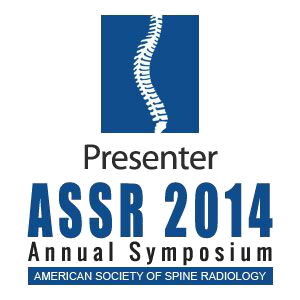A herniated disc occurs when the spinal disc's soft center pushes through the disc's outer ring. Depending on the location of the herniated disc, you can experience severe pain and discomfort in the arms, legs, neck, and back. When you consult a doctor with herniated disc symptoms, the doctor will perform diagnostic tests like X-rays before recommending the appropriate treatment.
Treatment options can include physical therapy, medications, or surgery. Herniated disc surgery is a last resort treatment when other options fail to treat the problematic disc. The surgery can involve removing the problematic disc, creating enough space for the bulging disc, or replacing the disc.
With technological advancements, the minimally invasive technique is used for spine surgery. A surgeon makes small incisions on the spine and uses special imaging tools to examine the problematic disc.
Depending on the treatment choice, the surgeon can remove or repair the herniated disc. The outcome of a herniated disc surgery can significantly impact your health and overall well-being. Therefore, you must consult with a knowledgeable surgeon.
What is Herniated Disc Surgery?
Herniated disc surgery is a medical procedure performed to treat a herniated or slipped disc. A herniated disc is a condition in which a spinal disc's soft, gel-like center protrudes through a tear in the outer disc layer. The herniation can put pressure on surrounding nerves. Symptoms of a herniated disc include pain, numbness, and weakness in the back, neck, arms, or legs.
Surgical intervention is typically recommended after other treatments fail. Your doctor may recommend rest, pain-relieving medication, and physical therapy before pushing for surgical intervention. Herniated disc surgery can involve removing the disc, creating more space for the nerves, or replacing the damaged disc.
Your doctor will assess your response to other treatments before recommending surgery. Recovery time for herniated disc surgery varies depending on the type of surgery. Patients experience significant relief from symptoms following successful procedures.
Types of Herniated Disc Surgery
You can expect to undergo any of these surgical procedures when you have a herniated disc:
Discectomy
Discectomy is the most common surgery for herniated discs. The procedure involves removing the part of the disc that presses on the nerve root or spinal cord. Your surgeon will perform the procedure under general anesthesia. There are two types of discectomy, including:
- Traditional Discectomy. With this type of discectomy, the surgeon makes an incision above the problematic disc and removes the part of the disc that presses on the nerve. This method allows for direct visualization and access to the disc.
- Microdiscectomy. Microdiscectomy, or minimally invasive discectomy, involves the use of advanced technology. The surgeon makes a smaller incision on the skin. They then use a microscope or specialized instruments to remove the herniated part of the disc. This technique results in less tissue damage and a shorter recovery time. Additionally, there is a lower risk of complications with the minimally invasive discectomy.
Laminectomy
Your doctor can recommend a laminectomy when the herniated disc causes spinal stenosis, a condition where the spinal canal narrows and puts pressure on the nerves. During a laminectomy, the surgeon removes part of the vertebral bone to create more space for the spinal nerves. The surgeon may combine this procedure with a discectomy if the herniation presses the nerve.
Spinal Fusion
After a laminectomy or a discectomy, the surgeon may recommend spinal fusion. Spinal fusion involves fusing two or more vertebrae. The procedure stabilizes the spine and prevents movement at the surgery site.
Your surgeon can recommend spinal fusion if the herniation causes significant damage to the spine. Additionally, this is an option when the removal of a large portion of the disc causes spinal instability. The surgeon uses bone grafts or metal hardware such as screws and plates to promote the fusion of the vertebrae.
Artificial Disc Replacement
For some patients, artificial disc replacement is an option for treating herniated discs. The procedure involves removing the damaged disc. The surgeon will then replace it with a prosthetic disc designed to mimic the function of a natural disc.
Artificial disc replacement reduces the need for fusion and maintains spine mobility. Your surgeon can recommend this procedure when the herniation affects the cervical region.
Herniated Disc Surgery Procedure
There are several types of herniated disc surgery. The general steps involved in the disc surgery include the following:
Medical Evaluation
The first step in herniated disc surgery is an evaluation of your symptoms. Your doctor will check your symptoms at this appointment and determine whether you have a herniated disc. Some symptoms of this condition can mimic those of spinal cord injury or other related conditions.
After your diagnosis, your doctor will discuss your treatment options. The surgeon will explain the available surgical options. Additionally, they will take you through the risks and benefits of each procedure.
Preoperative Preparation
Your doctor will recommend herniated disc surgery when other treatment options for your condition fail to yield the desired results. Before the surgery, you will undergo additional evaluation. The evaluation will include imaging tests such as MRI or CT scans to assess the severity and location of the herniated disc.
The doctor may also perform a blood test to determine your fitness for the surgery. Also, they may advise you to stop taking certain medications, such as blood thinners, before the procedure.
Anesthesia
A spine surgeon performs herniated disc surgery under general anesthesia. Administration of anesthesia ensures that the patient reduces pain or discomfort during surgery. Sometimes, the surgeon can use local anesthesia with sedation, especially for minimally invasive approaches.
If you have allergic reactions to medications, you must inform your surgeon. It helps to avoid unforeseen anesthesia complications.
Incision and Exposure
The surgeon makes an incision over the affected area of the spine. The size of the incision depends on the type of surgery being performed. For traditional laminectomy or discectomy, a larger incision is necessary to expose the affected disc.
If the surgeon uses the minimally invasive approach for your surgery, they will make small incisions.
Removal of the Herniated Disc
After exposing the surgical site, the surgeon removes the part of the herniated disc that presses the nerve root or spinal cord. If you need spinal fusion, the surgeon may also remove part of the vertebral bone or other spinal structures.
Stabilization
If your condition requires a spinal fusion, the surgeon will use bone grafts, metal plates, screws, or rods to stabilize the spine. The procedure promotes the healing process and keeps your spinal cord strong. The goal of this step in herniated disc surgery is to help the vertebrae fuse over time.
Closure
After removing the herniated disc and stabilizing it, the surgeon closes the incision with sutures or staples. The surgeon then moves you to the recovery room for monitoring. If you undergo traditional open spinal cord surgery, you may need to spend the night in the hospital. However, if the surgeon uses the minimally invasive surgical technique, you can go home a few hours after the surgery. Before leaving the hospital, your surgeon may advise you on proper postoperative care.
Aftercare Tips for Herniated Disc Surgery
Recovering from herniated disc surgery is a gradual process. It involves proper care, attention, and lifestyle adjustments to ensure optimal healing. The primary goals after your surgery are to reduce complications and promote healing. The following are aftercare tips you can follow to achieve these goals:
Pain Management
It is common to experience some pain after a herniated disc surgery. This pain may result from the healing of surrounding tissue. Your doctor will prescribe pain medications or over-the-counter options to help manage discomfort. You can use cold packs if you experience inflammation around the surgical site.
Effective Wound Care
Proper wound care prevents infection and ensures the surgical site heals well. The tips your surgeon can provide for wound care include:
- Keep the incision site clean and dry. Your doctor will recommend keeping your wound dry. You can learn this by wiping it with a clean cloth. You should also avoid hot baths while the wound heals.
- Avoid scratching or rubbing the incision site since it can lead to infection or irritation.
- Dressing changes. Your doctor will provide guidance on when and how to change the wound dressing.
Rest
Adequate rest is necessary for recovery after a herniated disc surgery. However, your doctor will not recommend complete bed rest. Excessive inactivity can result in muscle stiffness. Depending on your surgery type, your doctor may recommend avoiding bending, lifting heavy objects, or twisting.
Physical Therapy
Rest is essential for recovery from your surgery. However, it is also necessary to gradually reintroduce movement. These movements help to restore mobility and strengthen the muscles surrounding your spine.
Your doctor can recommend physical therapy sessions as part of your recovery plan. A physical therapist will design exercises to strengthen your muscles and improve flexibility.
Diet and Hydration
Proper nutrition is key to healing after spine surgery. A balanced diet rich in vitamins, minerals, and proteins will support tissue repair and immune function. Additionally, a high protein intake will boost muscle and tissue repair.
Dehydration can slow down the healing process and cause muscle cramps. You must take plenty of water to stay hydrated after your surgery.
Avoid Smoking and Excessive Alcohol Use
Smoking and excessive alcohol consumption can hinder healing. These habits reduce blood flow to the surgical site, which impairs tissue repair. If you are a smoker, your surgeon will advise you to quit the habit for adequate healing after a herniated disc surgery. Alcohol can interfere with medications and lead to dehydration. Therefore, you must avoid it until you have recovered from the surgery.
Monitor for Complications
There is a risk of complications after a herniated disc surgery. Therefore, you must look out for the signs of complications, which include:
- Increased or persistent pain. Herniated disc surgery is expected to relieve pain and discomfort caused by the damaged disc. If your pain persists or worsens after the surgery, consult your doctor.
- Infection. The symptoms of infection include fever, redness, swelling, and unusual drainage from the incision site. If you experience these symptoms, you must seek emergency medical care.
- Numbness or weakness. Numbness, weakness, or bladder/bowel control loss could indicate nerve issues. You must report these symptoms to your doctor immediately.
Complications of Herniated Disc Surgery
Herniated disc surgery is the last option for treatment for patients with a herniated disc. The surgical procedures help to remove or repair the herniated disc. The procedure eliminates the pain and discomfort associated with the condition. Spine surgeons have adopted the use of minimally invasive surgical techniques. However, you must consider the following potential complications before proceeding:
Infection
One of the most common risks associated with spine surgery is infection. An experienced surgeon will use sterile equipment during the procedure, but infections can still occur. These infections can affect the wound site and the spinal cord, leading to conditions such as osteomyelitis or discitis.
Patients with lowered immunity are at a higher risk of developing an infection after herniated disc surgery. Your surgeon can prescribe antibiotics to fight the infections after the surgery.
Nerve Damage
Herniated disc surgery relieves pressure on the nerves. However, there is a risk of nerve damage during the procedure. Nerve damage may result in numbness, persistent pain, or weakness in the legs and arms. In severe cases, nerve injury can permanently cause the loss of sensation or motor function. The risk of nerve damage varies depending on the location of the herniation and the type of herniated disc surgery.
Excessive Bleeding
Surgeons use minimally invasive surgical techniques to perform herniated disc surgery. Therefore, you can expect some slight bleeding from the incision sites. Excessive bleeding during or after herniated disc surgery is a possible complication.
Excessive blood loss may necessitate blood transfusions, which carry risks of infections. You are at an increased risk of excessive bleeding during the surgery if you have a blood clotting issue. Your doctor may recommend that you stop taking the blood-thinning medications.
Recurrent Disc Herniation
A herniated disc surgery repairs or removes the damaged disc. Even after the surgery, you may experience a similar problem. Recurrent disc herniations are common in patients who fail to adhere to postoperative guidelines. Recurrent herniation may cause symptoms that need additional surgery.
Spinal Instability
Spinal instability can occur due to excessive spinal disruption during the procedure. The disruption can make the spine unstable, causing pain and spinal deformities. Sometimes, your surgeon combines spinal fusion with disc removal to stabilize the spine.
Allergic Reactions to Anesthesia
Your surgeon will administer general anesthesia before a herniated disc surgery. The anesthesia helps to reduce the pain and discomfort associated with the surgery. However, you may experience an allergic reaction to the anesthesia. Symptoms of anesthesia allergy include breathing problems. If you have existing allergies to medication, you must inform your surgeon of the procedure to avoid this complication.
Dural Tear
An accidental dural tear is a common complication in spine surgeries, including herniated disc surgery. The injury occurs when a surgical instrument nicks the thin covering of the spinal cord. Minor dural tears can recover with minimal repair. Severe cases of dural treatment can result in cerebral spinal fluid leakage, meningitis, and nerve problems.
Failed Back Surgery Syndrome (FBSS)
Sometimes, patients may experience ongoing or new symptoms after herniated disc surgery. This condition is known as Failed Back Surgery Syndrome (FBSS). Persistent herniated disc symptoms can occur due to a variety of factors. They include incorrect diagnosis, poor surgical technique, or the development of new problems in the spine. FBSS can lead to chronic pain and a decreased quality of life. If you experience FBSS, you may require additional treatments or surgeries.
Postoperative Pain and Discomfort
The goal of herniated disc surgery is to relieve pain and discomfort caused by a herniated disc. However, some patients experience residual or new pain after surgery. The pain and discomfort can result from muscle spasms or the body’s adjustment to changes in the spine. Postoperative pain is temporary. You can treat it with anti-inflammatory or pain-relieving medications.
Find a Competent Spine Surgeon Near Me
A herniated disc causes pain, discomfort, and numbness in the limbs and back. If other treatments prove ineffective, a spine surgeon will recommend herniated disc surgery. The type of surgery chosen for your herniated disc will depend on the severity of your symptoms and the location of the herniation.
Discectomy is the most common and effective type of herniated disc surgery. Your surgeon can recommend procedures like laminectomy, spinal fusion, and artificial disc replacement. Herniated disc surgery can involve removing, repairing, or replacing the damaged spinal disc.
Although surgeons use minimally invasive techniques for these procedures, you may suffer complications. Common complications of herniated disc surgery include infections, excessive bleeding, and nerve damage. Consulting with a spine specialist is crucial for determining the most appropriate treatment. At LAMIS, we offer safe, reliable, and effective spine surgery services for our Los Angeles, CA clients. Contact us at 310-734-6088 to book an appointment.

